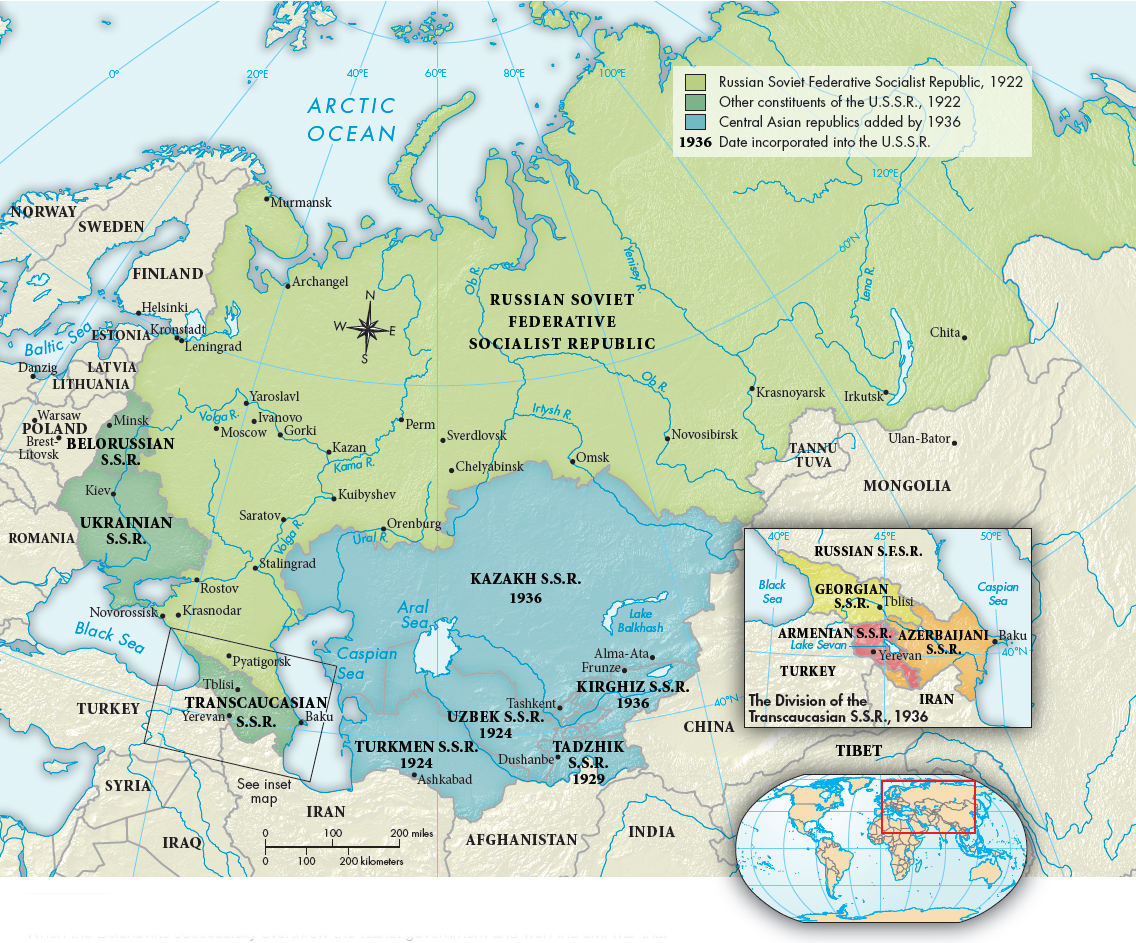From Lenin to Stalin
By spring 1921, Lenin and the Bolsheviks had won the civil war, but they ruled a shattered and devastated land. In the face of economic disintegration, Lenin replaced War Communism with the New Economic Policy (NEP), which re-established limited economic freedom in an attempt to rebuild agriculture and industry. Peasant producers were permitted to sell their surpluses in free markets, and private traders and small handicraft manufacturers were allowed to reappear. Heavy industry, railroads, and banks, however, remained wholly nationalized. The NEP brought rapid economic recovery, and by 1926 industrial output surpassed, and agricultural production almost equaled, prewar levels.
In 1924, as the economy recovered and the government partially relaxed its censorship and repression, Lenin died without a chosen successor, creating an intense struggle for power in the inner circles of the Communist Party. The principal contenders were Stalin and Trotsky. In the end, Stalin won, in large part because he was more effective at gaining the all-important support of the party. Having risen to general secretary of the party’s Central Committee in 1922, he used his office to win friends and allies with jobs and promises.
Stalin’s ascendancy had a momentous impact on the policy of the new Soviet state toward non-Russians. The Communists had inherited the vast multiethnic territories of the former Russian empire. Lenin initially argued that these ethnic groups should have the right to self-determination even if they claimed independence from the Soviet state. In 1922, reflecting such ideas, the Union of Soviet Socialist Republics (or U.S.S.R.) was organized as a federation of four Soviet republics: the Russian Soviet Federative Socialist Republic, Ukraine, Belorussia, and a Transcaucasian republic. The last was later split into Armenia, Azerbaijan, and Georgia, and five Central Asian republics were established in the 1920s and 1930s (Map 27.1).

MAP 27.1
The Formation of the U.S.S.R.When the Bolsheviks successfully overthrew the tsarist government and won the civil war that followed, they inherited the vast territories of the former Russian empire. Following policies instituted by Stalin, they established a Union of Soviet Socialist Republics (U.S.S.R.) that gave limited cultural independence but no real political autonomy to the various Soviet republics under Communist control.
In contrast to Lenin, Stalin argued for more centralized Russian control of these ethnic regions. His view would dominate state policy until the breakup of the Soviet Union in the early 1990s. The Soviet republics were granted some cultural independence but no real political autonomy. The Stalinists thus established a far-flung Communist empire on the imperial holdings of the former tsars.
Stalin achieved supreme power between 1922 and 1927. First he allied with Trotsky’s personal enemies to crush his rival, and then he moved against all who might challenge his ascendancy, including former allies. Stalin’s final triumph came at the party congress of December 1927, which condemned all “deviation from the general party line” that he had formulated.
